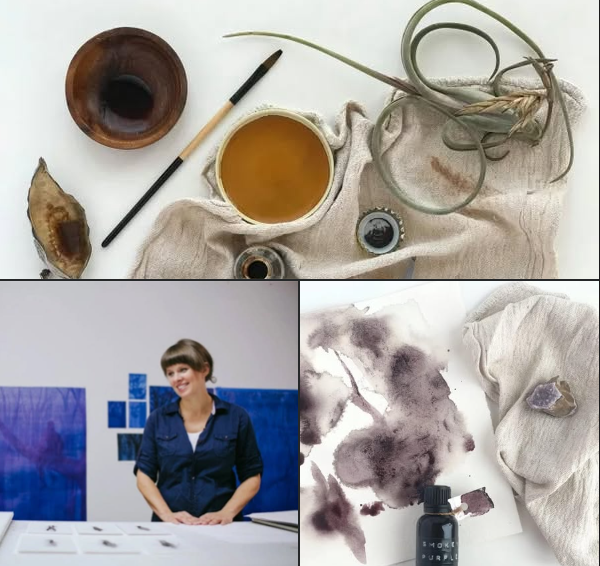Ink art made from natural or recycled materials promotes sustainability and encourages the public to reassess its relationship with the environment. Through their creations, artists manage to inspire and mobilize their audiences, promoting environmental responsibility in a creative and meaningful way. The use of recycled or natural inks in art is an important step toward promoting sustainability. Many artists choose to use natural inks produced from plants, vegetables, and other organic materials to reduce their environmental footprint. These inks are non-toxic and can be made from everyday items such as fruits, vegetables, coffee, and spices.
Melissa Mary Jenkins, for example, creates her own natural inks from plant-based materials such as walnut leaves, turmeric roots, and red onions. She uses these inks to create artworks that reflect the beauty of nature and raise awareness about environmental protection. Additionally, Carrie Ann Hall uses natural inks on canvases and raw wood, emphasizing sustainable artistic practice.
Natural inks also have historical roots. They were used by early artists who collected plants, roots, and berries to create pigments. These natural inks not only reduce the use of toxic chemicals but also help artists connect with the environment. At the same time, the use of such materials enhances environmental consciousness and public awareness. Artists like Cindy Stockton Moore, who uses natural inks to create nature-themed works, demonstrate how art can combine aesthetics with environmental responsibility.






